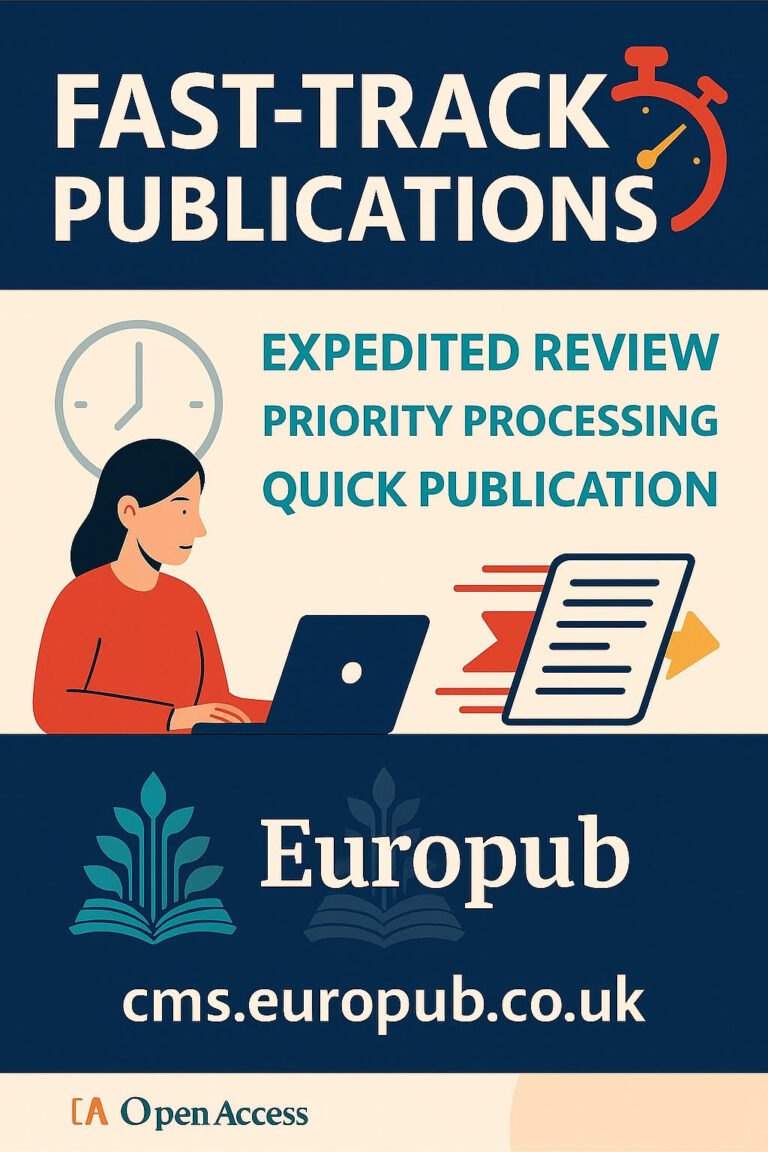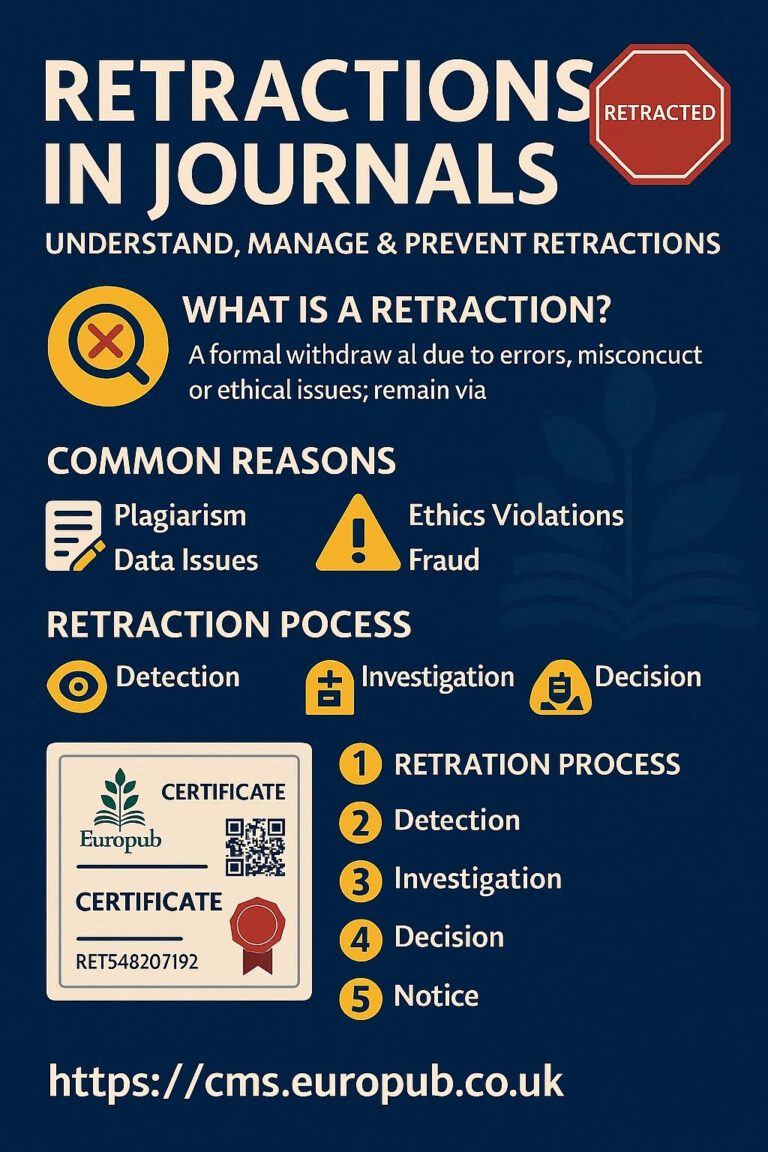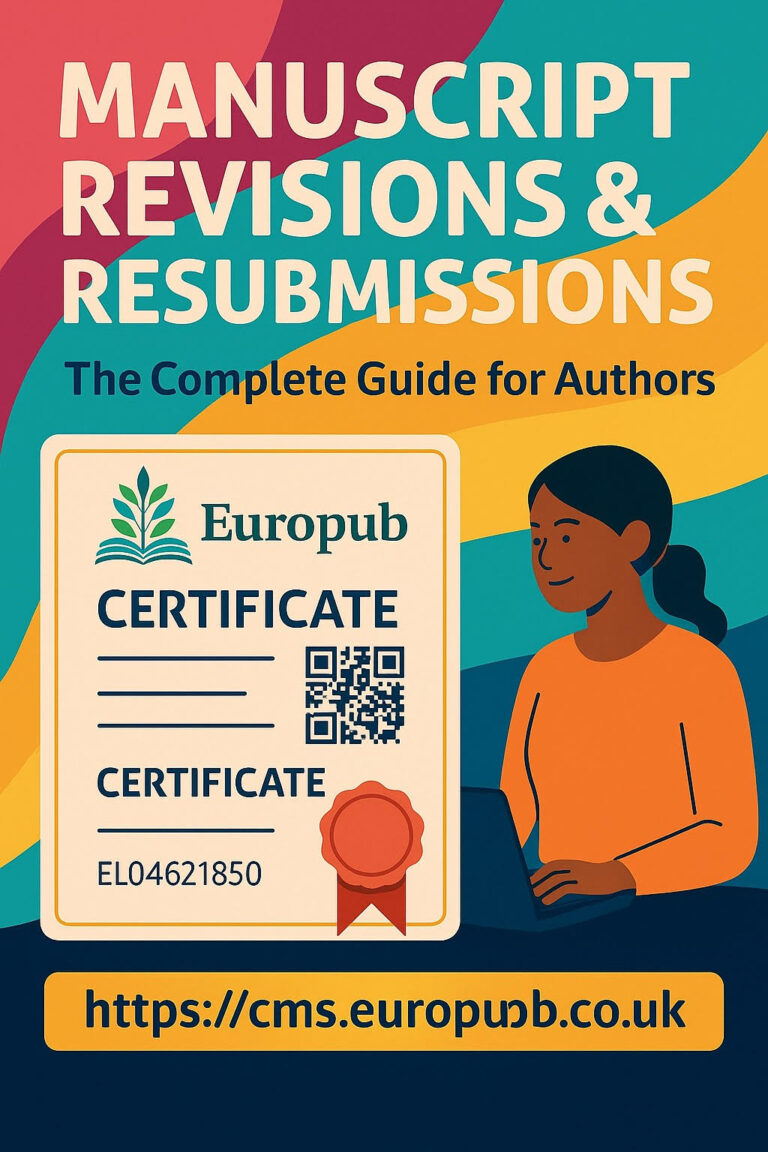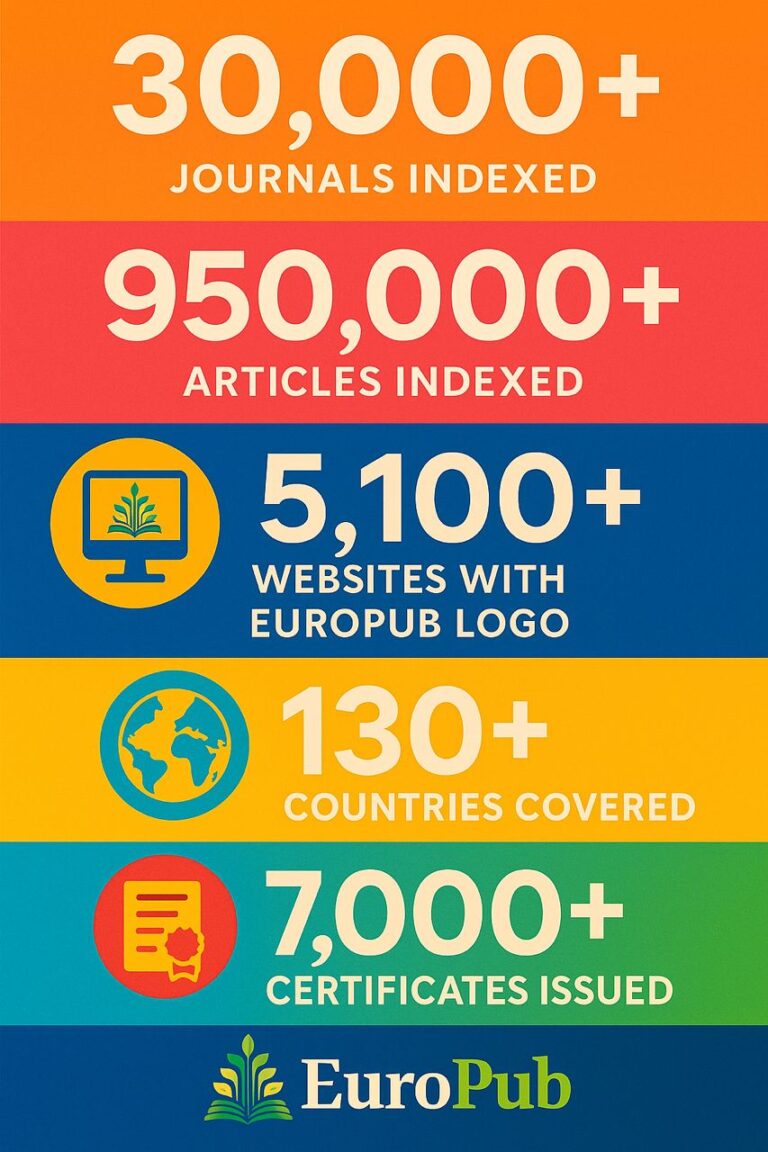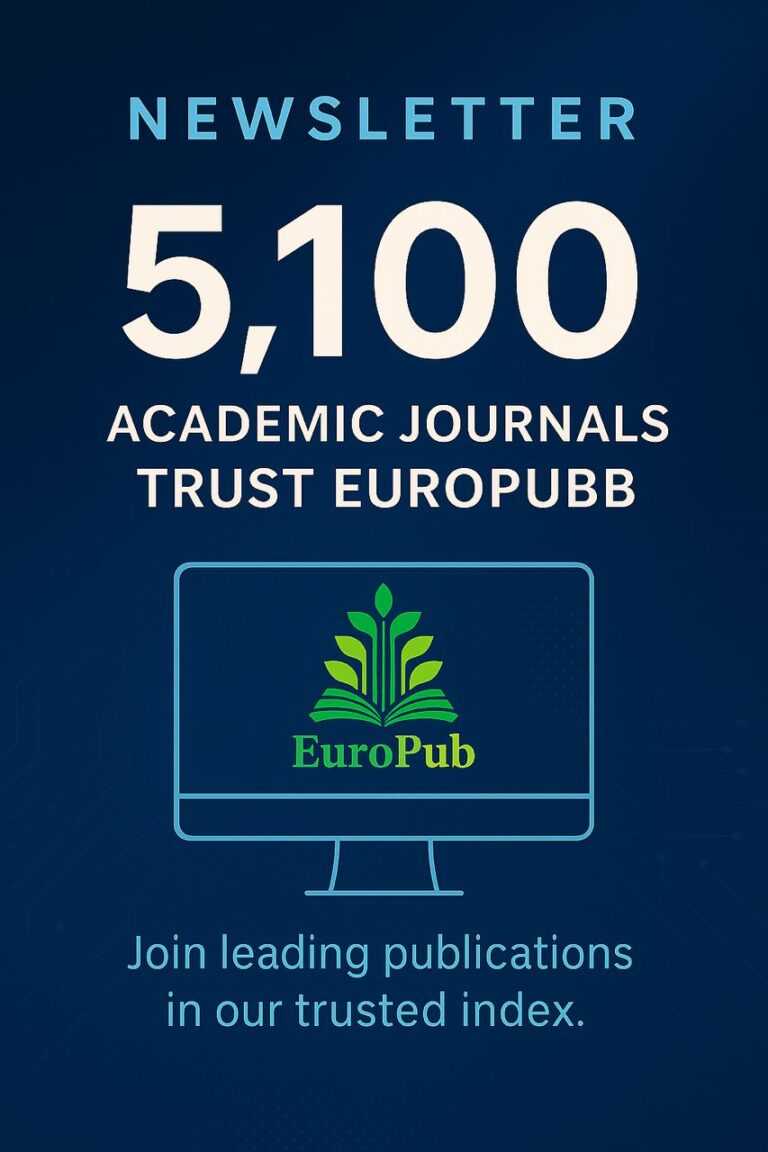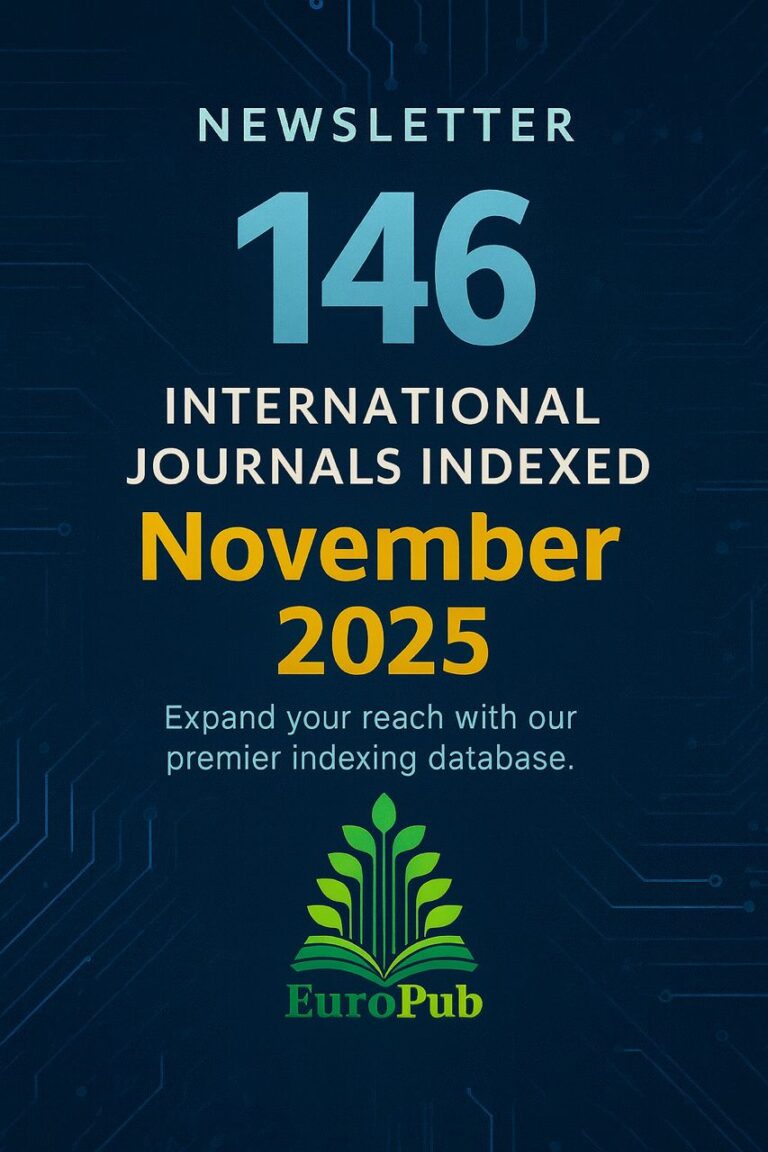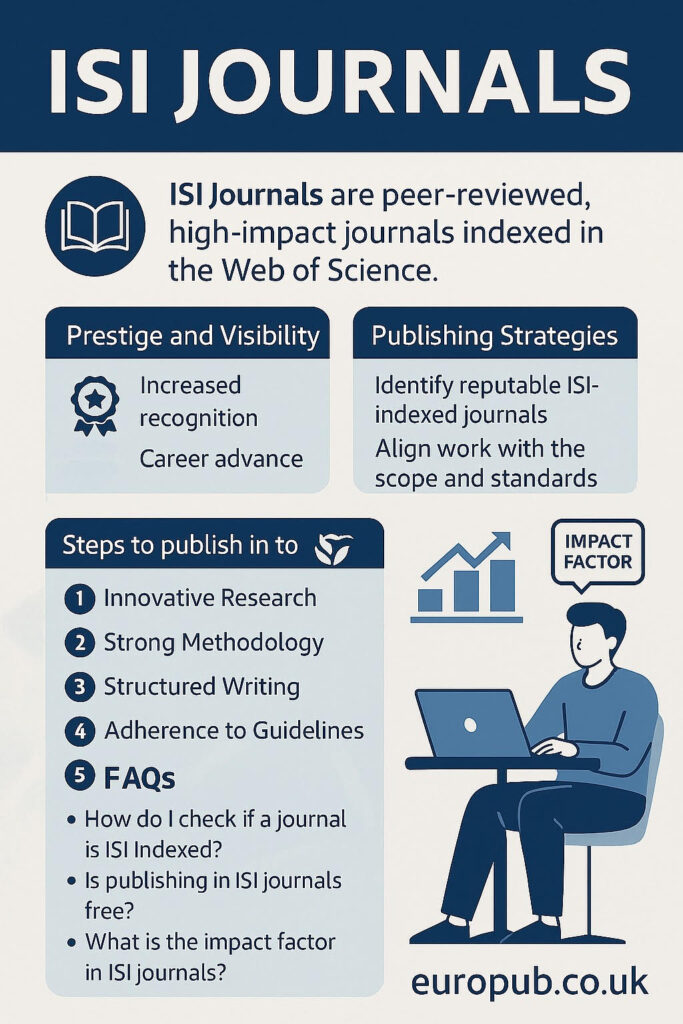
 What Are ISI Journals?
What Are ISI Journals?
The term ISI Journals refers to scholarly journals originally indexed by the Institute for Scientific Information (ISI), founded by Eugene Garfield in 1960. ISI created the Science Citation Index (SCI), which later expanded into SSCI (Social Sciences Citation Index) and AHCI (Arts & Humanities Citation Index).
Today, ISI’s legacy is maintained by Clarivate Analytics, which owns the Web of Science (WoS) Core Collection. Journals indexed in Web of Science are often referred to as “ISI Journals,” particularly those included in:
- SCIE (Science Citation Index Expanded)
- SSCI (Social Sciences Citation Index)
- AHCI (Arts & Humanities Citation Index)
- ESCI (Emerging Sources Citation Index)
 Historical Background
Historical Background
- 1960 – Eugene Garfield establishes ISI.
- 1975 – The Journal Citation Reports (JCR) are launched, introducing the Impact Factor.
- 1992 – ISI is acquired by Thomson Reuters.
- 2016 – Clarivate Analytics takes over and continues Web of Science.
This long history is why “ISI Journal” is still a common term worldwide, even though the official index today is Web of Science.
 Importance of ISI Journals
Importance of ISI Journals
- High Prestige & Credibility – Globally recognized as top-tier academic journals.
- Impact Factor – Only ISI-indexed journals receive an official Impact Factor in JCR.
- Academic Requirements – In many countries, ISI publications are required for PhD defense, tenure, promotion, or research grants.
- Citation Tracking – Indexed articles contribute to metrics like h-index, citation counts, and altmetrics.
- International Visibility – Ensures your research is globally accessible and cited.
 Clarivate’s Criteria for ISI Indexing
Clarivate’s Criteria for ISI Indexing
Clarivate evaluates journals based on strict standards, including:
- Rigorous peer-review process
- Strong editorial board with international scholars
- Publication ethics (COPE compliance, plagiarism checks, transparency)
- Regular and punctual publishing schedule
- High citation impact and relevance to research community
- Digital standards (DOIs, ORCID, metadata, indexing)
 Categories of ISI Journals in Web of Science
Categories of ISI Journals in Web of Science
- SCIE – Science, medicine, engineering, life sciences.
- SSCI – Psychology, education, business, economics, law, sociology.
- AHCI – Literature, arts, history, philosophy.
- ESCI – Emerging journals being evaluated for future inclusion in SCIE/SSCI/AHCI.
 How to Identify an ISI Journal
How to Identify an ISI Journal
- Use the Web of Science Master Journal List: https://mjl.clarivate.com
- Verify Impact Factor in Journal Citation Reports (JCR).
- Confirm inclusion in SCIE, SSCI, AHCI, or ESCI.
- Cross-check with official Clarivate Analytics updates.
 Benefits of Publishing in ISI Journals
Benefits of Publishing in ISI Journals
- Enhances academic profile and international reputation.
- Required for scholarships, grants, and academic promotions in many countries.
- Higher chance of being cited, raising your h-index.
- Opens opportunities for collaborations with top institutions.
 Challenges and Disadvantages
Challenges and Disadvantages
- High rejection rates (acceptance can be as low as 5–15%).
- Publication costs (APCs in open-access ISI journals can be $1000–$5000).
- Time-consuming peer review (can take months or even years).
- Language barrier (most ISI journals require high-standard academic English).
 Common Mistakes Researchers Make
Common Mistakes Researchers Make
- Submitting to predatory journals that falsely claim ISI indexing.
- Choosing journals only for Impact Factor, ignoring scope and fit.
- Neglecting journal guidelines (formatting, references, word count).
- Not checking updated indexing status — journals can be delisted.
 Frequently Asked Questions (Extended FAQ)
Frequently Asked Questions (Extended FAQ)
Q1: Are all Web of Science journals ISI journals?
 No. Only those in SCIE, SSCI, and AHCI are considered “traditional ISI journals.” ESCI journals are indexed but do not yet have Impact Factor.
No. Only those in SCIE, SSCI, and AHCI are considered “traditional ISI journals.” ESCI journals are indexed but do not yet have Impact Factor.
Q2: How can I check if a journal is really ISI?
 Use Clarivate’s official Master Journal List: https://mjl.clarivate.com.
Use Clarivate’s official Master Journal List: https://mjl.clarivate.com.
Q3: Do all ISI journals have Impact Factor?
 No. Only journals listed in Journal Citation Reports (JCR) receive an Impact Factor.
No. Only journals listed in Journal Citation Reports (JCR) receive an Impact Factor.
Q4: Can I publish in an ISI journal for free?
 Some ISI journals are subscription-based and do not charge authors. However, open-access ISI journals usually require APCs.
Some ISI journals are subscription-based and do not charge authors. However, open-access ISI journals usually require APCs.
Q5: Why do universities insist on ISI publications?
 Because ISI journals are considered the most rigorous, ensuring research credibility.
Because ISI journals are considered the most rigorous, ensuring research credibility.
Q6: What is the difference between ISI and Scopus?
 ISI (Web of Science) is older and more selective. Scopus indexes more journals, but ISI is often considered more prestigious.
ISI (Web of Science) is older and more selective. Scopus indexes more journals, but ISI is often considered more prestigious.
Q7: Are ISI journals available in all disciplines?
 Yes, from engineering and medicine to social sciences and arts.
Yes, from engineering and medicine to social sciences and arts.
Q8: Can ISI journals be removed from the list?
 Yes. Journals that fail to meet Clarivate standards may be discontinued.
Yes. Journals that fail to meet Clarivate standards may be discontinued.
Q9: How does publishing in ISI journals affect my h-index?
 Since they are indexed in Web of Science, citations are counted towards your WoS h-index.
Since they are indexed in Web of Science, citations are counted towards your WoS h-index.
Q10: How does Europub support ISI authors?
 Europub provides certification for authors, editors, and reviewers of ISI journals via its certificate management system (CMS).
Europub provides certification for authors, editors, and reviewers of ISI journals via its certificate management system (CMS).
 Useful Resources
Useful Resources
- Europub Main Site → https://europub.co.uk
- Europub News → https://news.europub.co.uk
- Europub Certificates (CMS) → https://cms.europub.co.uk
- Web of Science Master Journal List → https://mjl.clarivate.com
- Clarivate Journal Citation Reports → https://clarivate.com/webofsciencegroup/solutions/journal-citation-reports/
 Conclusion
Conclusion
Publishing in ISI Journals is one of the most important milestones in an academic career. While it is challenging, time-consuming, and competitive, it brings immense credibility and recognition. With Europub certification and guidance, researchers can further validate their contributions and enhance their visibility worldwide.
